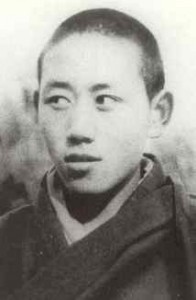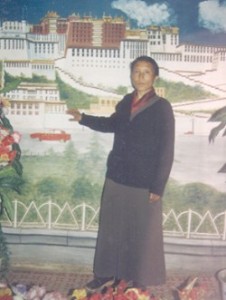The People’s Republic of China recommenced implementation of the ‘patriotic education’ campaign in monastic institutions in Tibet, according to testimonies received from Tibetan monks who fled into exile. There has been a noted rise in the intensity of the campaign, which is being carried out vigorously in the monastic institutions in and around Lhasa City, Tibet Autonomous Region (TAR). Monks…
The People’s Republic of China recommenced implementation of the “patriotic education” campaign in monastic institutions in Tibet, according to testimonies received from Tibetan monks who fled into exile.
There has been a noted rise in the intensity of the campaign, which is being carried out vigorously in the monastic institutions in and around Lhasa City, “Tibet Autonomous Region” (‘TAR’). Monks who fled Tibet in the aftermath of the campaign reported expulsions of monks from their monasteries.
Three young Tibetan monks, who escaped from Tibet in September 2005, reported conduct of “patriotic education” in June 2005 in their monastery, Talung Monastery located in Phenpo Lhundrup County, Lhasa Municipality, ‘TAR’. The monastery which housed around 120 monks reportedly has only 20 monks who are registered with the Religious Bureau. Earlier the monks were issued with five different political literatures to study; two additional literature were distributed in June 2005. The monks were notified that officials from the County Religious Bureau would arrive in the monastery in July 2005 to conduct examinations. Monks, above 18 years of age, were ordered to condemn the Dalai Lama as a “separatist,” and to pledge loyalty to the mainland China during the next visit of the officials. Upon learning the pre-requisites set by the authorities for enrollment in monastery, a large number of monks left the monastery voluntarily before the arrival of the officials.
The Tibetan Centre for Human Rights and Democracy (TCHRD) has received information from a reliable source that, Rinzin Wangyal a.k.a Rinwang, 59, died in prison at the end of 2004. There has been no official confirmation of Rinzin Wangyal’s death. It has been reported that his body was not handed over his family.
Rinzin was serving a life imprisonment term in Pawo Tramo Prison, 250 km east of Lhasa. According to the most recent information received by TCHRD on 31 May 2004, his health condition was known to have gravely deteriorated due to constant torture over the years in prison.

According to the confirmed information received by Tibetan Centre for Human Rights and Democracy (TCHRD), Ngawang Woeser, one of the architects of the famous Pro-independence peaceful demonstration of 27 September, 1987 in Lhasa, was released on 18 April, 2004 from Drapchi prison. He was released on completion of his 15 years imprisonment term. His physical condition is known to have deteriorated severely over the years due to various tortures and inhuman treatments suffered in the prison. Currently his physical condition is extremely frail and has suffered severe body weight loss.
According to the confirmed information received by Tibetan Centre for Human Rights and Democracy (TCHRD), Ngawang Woeser, one of the architects of the famous Pro-independence peaceful demonstration of 27 September 1987 in Lhasa, was released on 18 April, 2004 from Drapchi prison. He was released on completion of his 15 years imprisonment term. His physical condition is known to have deteriorated severely over the years due to various tortures and inhuman treatments suffered in the prison. Currently his physical condition is extremely frail and has suffered severe body weight loss.
Ngawang Woeser along with one of the 20 Drepung monks initiated the first peaceful pro-independence demonstration in Lhasa after the Chinese occupation of Tibet in 1959. The demonstration lasted only a few minutes and the monks were quickly arrested by the Public Security Bureau.

TCHRD received confirmed information that Namdrol Lhamo, one of the last two Drapchi 14 nuns in prison, was released in September 2003. She is reportedly in Lhasa City and in bad health condition. Namdrol was released upon completion of her 12 years’ imprisonment term.
Namdrol Lhamo and many other political prisoners arrested in late 1980s and early 90s are now being released on completion of their respective terms. Most of them suffer long-term illnesses even after release as a result of prison atrocities. The released prisoners face utter hardship in resettling in the society as they are put under severe vigilance and bound in invisible chains.
A Tibetan monk from Drepung monastery in Lhasa, Ngawang Samphel (33), was arrested in early April 1999 for suspicion of political acts. At present his whereabouts are unknown. This is the second time that Ngawang has been arrested. His first detention in Gutsa Detention Centre was for taking part in a peaceful demonstration on 27 September 1988, with five other monks from Drepung monastery.
On 27 September 1988, Ngawang Samphel and five other Drepung monks, Ngawang Zegen (22), Ngawang Chemey (30), Ngawang Thosam (28), Jamphel Wangchuk (28) and Jamphel Sherab (31) staged a peaceful demonstration in the Barkhor in Lhasa, shouting slogans calling for Tibetan independence. The officials of the People’s Armed Police (PAP) and Public Security Bureau (PSB) immediately arrested them. They were taken to Gutsa Detention Centre, located to the east of Lhasa. While in detention, the six monks were subjected to severe torture. As a result of the torture Ngawang’s friend Ngawang Zegen from Toelung County, died in 1989 approximately one month after his release.
Two prisoners in Tibet’s Drapchi Prison died instantly on May 4, 1998, when prison officials opened fire on unarmed prisoners staging a protest in the prison. Sources from Tibet report that 200 other prisoners were seriously injured in the shooting and beatings used to suppress the revolt. The identities of the dead prisoners are unknown.
Earlier reports stated that the May 4 protest was begun by a group of 80 Drapchi prisoners from units 5 and 6. The group reportedly disrupted a prison function commemorating “Youth Day” by shouting slogans and pasting posters around the prison. Recent information indicates that the protesters distributed pamphlets and demanded the release of prisoners who had been placed in solitary confinement following an earlier protest in Drapchi on May 1.
